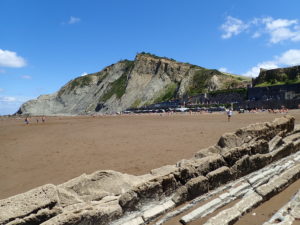
Hi All,
It certainly has been a while since out last post! Luckily, we are recently returned from Spain and dying to tell you all about it! Where to start…
The geology of Spain is pretty varied. There are marine fossil beds, world-class pyrite deposits, Barrovian sequences that you can hike; the list goes on. We don’t have time to talk to you about them all, so will give you a brief overview of the highlights through this series.
We also highly recommend just going to Spain for the scenery. Check out some of the Natural Parks and UNESCO Geoparks. We recommend Bardenas Reales NP, Urbasa-Andia NP, Basque Coast GP, Picos de Europa NP, Sierra Nevada NP and Cabo de Gata-Níjar GP.
Also, you know, there’s amazing wine (seriously the wine!!!), friendly locals that practice their English on you, gorgeous architecture, delicious food (try the goose barnacles!), flamenco dancing, vultures that circle you on walks…etc etc.
Basically it’s a pretty awesome place and you’d be crazy not to go. So now that you’re busy packing your bags, make sure you book yourself a hire car and head up to Zumaia.
PART 1. ZUMAIA
If there is only one geological area that you can visit in your life, make it Zumaia. Zumaia hosts the ROCKSTAR (pun intended) of all geological attractions; the K-T Boundary. Sounds boring and scientific right? WRONG!!! The K-T boundary is AWESOME, as you are about to find out…
Approximately 65 million years ago, something happened to the Earth. Experts argue over exactly what happened, but what we do know, is that something caused one of the most famous mass extinctions of all time; the demise of the dinosaurs.
So what happened? The leading theory is that a large asteroid hit the Earth and wiped out approximately three quarters of all plant and animal life. But how do we know this? How do we know that the dinosaurs didn’t just get into a spaceship and fly away? Well aside from the fact that there’s no way a T-Rex could pilot a ship with those tiny little hands, we know because of the K-T Boundary.
Within this thin, ugly layer of rock are high concentrations of an element called iridium. This innocuous little metal is pretty rare on Earth, but common in asteroids. Couple this with the presence of shocked quartz in the Boundary, and the reliability of this layer across the globe, science says…asteroid (Yay science!!!).
When this happened, the impact was so great that particles of disintegrated rock and asteroid were flung into air. Eventually, after blocking the Sun and killing everything, the ‘dust settled’ (literally), and a fine layer of iridium-rich clay was deposited all over the Earth. This layer then turned into rock and finally became the K-T Boundary that we all know and love.
Now for the really AWESOME part…you can touch…on Itzurun beach in Zumaia. I repeat, bits of dinosaur-killer can be found on Itzurun beach. Cue geologist happy dance!!!
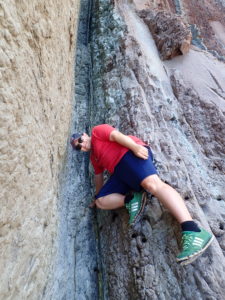
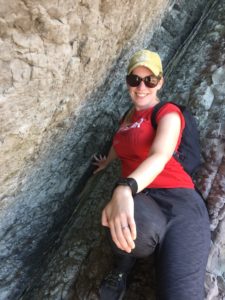
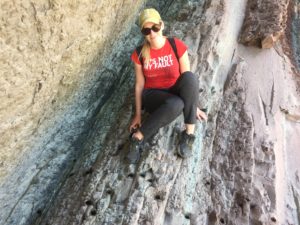
There are also ammonites and various other fossils around, but this is a Geopark so no collecting!!! The flysch itself is pretty cool if you are into turbidites, and you can also touch the E-P Boundary back at the main beach area- though let’s be honest, no one really cares after the K-T Boundary.
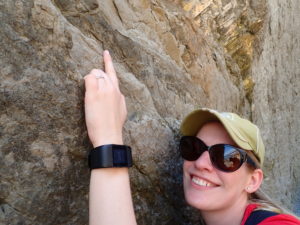
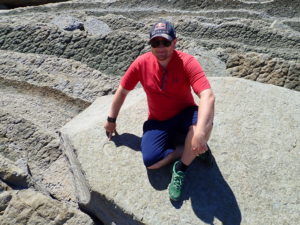
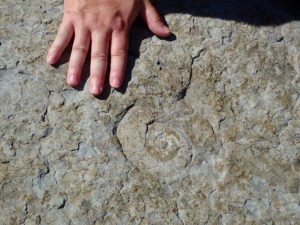
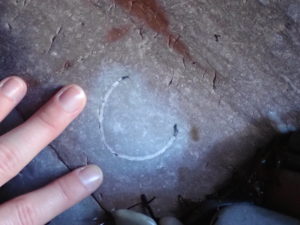
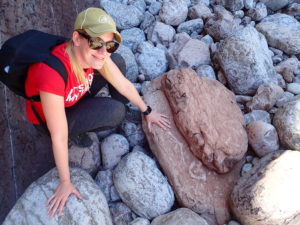
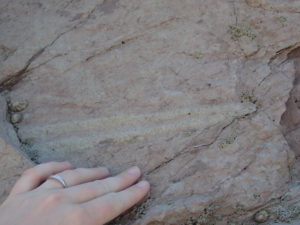
Now for a few words of WARNING…
In terms of access, check tide times before you go. The K-T Boundary can be accessed only on, or close to low tide, when the flysch is fully exposed. Also, be aware that you have to walk a little way west along the cliffs to reach the K-T Boundary from the main area of Itzurun beach. This walk isn’t that steep, but it is very high and there are no safety barriers. Wear proper shoes and hike at your own risk!
To make sure you know exactly which layer to touch, visit the Algorri Interpretation Centre (basically the Zumaia Natural History Museum). It’s only a few euros and you will also find loads of information about the Basque Coast Geopark. There is also an app that you can download for the walk to the Boundary from the main beach area (along clifftops); Zumaia Audio Guide.
Finally, we recommend spending a few days in the area, as the K-T Boundary is only one of the many geological marvels the region has to offer. Happy travels and happy fossicking!
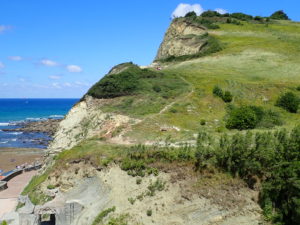
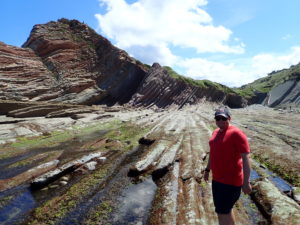
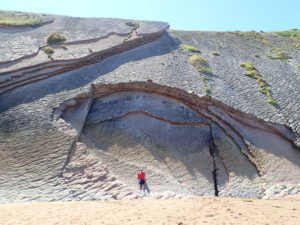
Bill Roberts
Great Info. Thx! I’m heading to Spain next week, and I intend to visit Zumaia to see the K-T boundary. I hope I can find some local knowledge to guide me there. I can walk 5 to 8 miles if necessary- but do you have to traverse the beach specifically at low tide, or is the site located low, so you have to visit the boundary at low tide?
I’m a geologist and Radiologist but now retired. Thx for your info.
Kane Maxwell
Hi Bill. Always nice to hear from another geologist! Access to the part of the flysch where the Boundary is exposed is from the cliffs above. There is a trail along the cliffs that leads to the exposure, starting at Itzurun beach. It is very high (if you are afraid of heights I would not recommend it), but a relatively easy walk. There are some stairs leading down from the cliff trail to the flysch ‘beach’ where the K-T Boundary is exposed. You can walk the cliff trail at any time, but you will only be able to go down the stairs and access the K-T Boundary at low tide. Once down you will have to walk across the flysch (roughly east towards the sheer cliff the trail comes down from) to find the Boundary. There are no signs, but there are drill holes from where it has been sampled. It will be a small, thin layer at the very base of the cliff (look for the shocked quartz). Have a look at the photos in the blog post to help you, or download the audio guide app mentioned in the post. Alternatively you can visit the Algorri Interpretation Centre in town if you have questions or need further directions. Good luck!
P.S. If you are looking for a place to eat we’d recommend trying the pintxos at Idoia Ardotegia (avoid the a la carte menu- its overpriced and not as good!). It gets busy but it’s worth it!
Ivana
Hi! I just wanted to thank you for this article. We went to Zumaia this summer and you really helped us to find the legendary K-T boundary! Quite an awesome experience 🙂
Lauren Maxwell
Hi Ivana. Glad we helped you out and that you enjoyed the experience so much!